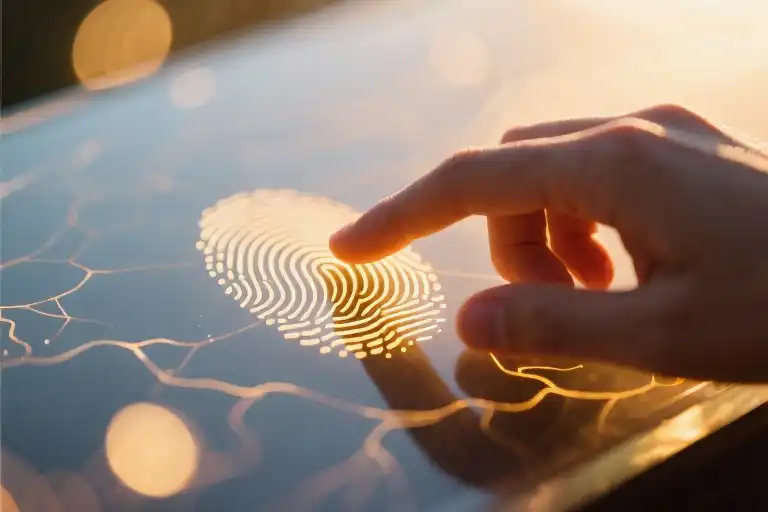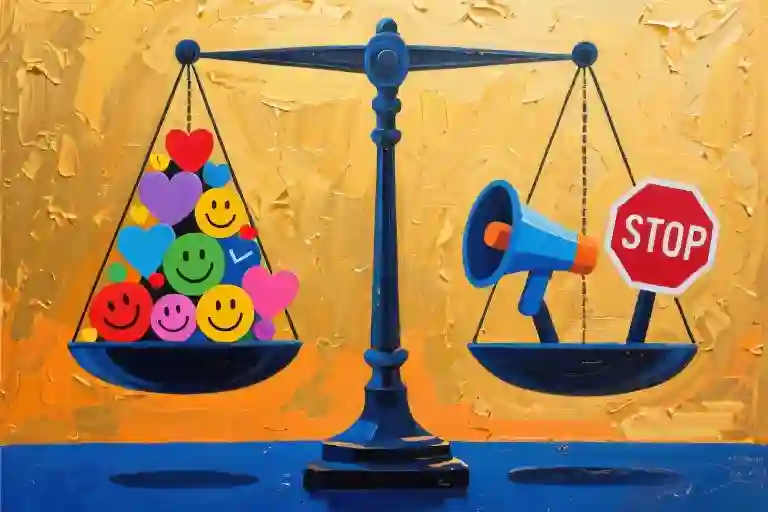You know that moment when you stumble upon an old book on your shelf—one whose pages you once dog-eared with devotion, whose passages you underlined with trembling fingers—only to realize now that you can’t even recall the protagonist’s name? Relationships often mirror this peculiar amnesia. We pour our hearts into connections, believing we’re co-authoring an epic, while the other person is simply skimming through a short story collection.
A recent study in the Journal of Social Psychology reveals 73% of young adults experience ‘relational misalignment’—that jarring realization that what felt like a shared narrative was actually a solo journey with occasional guest appearances. The ache of being someone’s temporary chapter cuts deeper than dramatic breakups, precisely because it lacks closure’s clean edges. There’s no final fight, no slammed door—just the gradual fading of highlighters on pages no longer revisited.
Over the next few sections, we’ll navigate this emotional terrain through three lenses:
- The Book Metaphor: Dog-eared pages versus permanent ink
- Architectural Blueprints: When you mistake scaffolding for foundation
- Emotional Weather Systems: Learning to forecast relationship seasons
Like marginalia that outlives its relevance, these unspoken farewells linger in our emotional libraries. But understanding their shelf life might just help us reorganize our relational collections with more intention—and less heartache.
The Silent Library: When Relationships Go Out of Print
You’re scrolling through your phone on the subway when a familiar laugh cuts through the noise. There they are—three seats away—completely absorbed in a conversation with someone new. Your thumb hovers over the screen as you perform the modern equivalent of hiding behind a newspaper: aggressively refreshing apps you don’t even use. This is how relationships end now—not with dramatic confrontations, but with algorithmically determined distances and the silent understanding that you’ve become archival material in their personal library.
7 Unspoken Signals Your Chapter Has Closed
- The Detail Drought: They stop asking about the specifics—your sister’s surgery, that job interview, the bakery you wanted to try. When conversations become weather reports (‘I’m fine, you?’), the story has moved on.
- Memory Lane Closures: References to shared experiences get met with polite smiles instead of reciprocal memories. That weekend trip becomes ‘that time you went somewhere’ in their retelling.
- Response Time Inflation: Texts that once sparked instant reactions now float in read receipt purgatory. You start noticing their ‘last active’ timestamps like stock market tickers.
- The Schedule Shift: Spontaneous plans become logistical nightmares requiring three-week advance notices. Their calendar suddenly operates in geological time.
- Emoji Extinction: Heart reactions devolve into thumbs-up, then lone periods. The digital body language speaks volumes.
- Social Media Archaeology: They still like your vacation photos from two years ago but ignore current posts—a curator preserving artifacts while ignoring the living exhibit.
- The Phantom Notification: You catch yourself imagining vibrations from your phone. Hope becomes its own notification center.
The 5 Stages of Temporary Relationship Grief
- Denial (The Table of Contents Phase):
“They’re just busy—see how they liked my birthday post?”
You comb through interactions like a librarian checking indexes, convinced there’s a hidden sequel. - Surveillance (The Highlighting Phase):
Instagram stories become forensic evidence. You notice they’re listening to that playlist you made—surely this means something? (Spoiler: It doesn’t.) - Scriptwriting (The Marginalia Phase):
Shower arguments and imaginary reunions play on loop. You draft texts you’ll never send, composing dialogue for a conversation that won’t happen. - Performance Art (The Bookmark Phase):
Strategic posts designed to elicit reactions. That photo at the place they mentioned? Calculated. The song lyric caption? A semaphore flag waving at ghosts. - Release (The Re-shelving Phase):
One morning you realize you haven’t checked their Spotify in weeks. Their name appears on your screen and your pulse stays steady. The story isn’t about them anymore.
“We don’t get closure, we get distance. And eventually, that distance becomes its own kind of answer.” — @TemporaryChapter
This isn’t failure—it’s the natural lifecycle of connections in an age where attention is the scarcest currency. The beauty of libraries isn’t that every book stays forever, but that each leaves traces in the ones that follow. Your margins still hold their notes, but the next chapter is yours alone to write.
Misread Blueprints: How We Misjudge Relationship Dynamics
We’ve all been architects of misread connections—those relationships where we drafted elaborate blueprints, only to realize we were building on someone else’s temporary scaffolding. The pain isn’t just in the leaving; it’s in the retrospective clarity that what we thought were load-bearing walls were merely decorative trim in their emotional architecture.
The Contractor vs. The Festival Flirt
Consider these two encounters from my readers:
Case A: The Wedding Planner
Sarah spent eight months collaborating with a client on floral arrangements and seating charts. Their weekly meetings felt like friendship—shared lunches, inside jokes about difficult relatives. When the wedding ended? Radio silence. “I realized,” Sarah says, “I wasn’t her friend—I was premium customer service.”
Case B: The Music Festival Connection
Jake locked eyes with someone during a sunset set at Coachella. Three days of shared blankets and deep conversations about life purpose. They exchanged numbers but never spoke again. “I drafted entire future scenarios,” he admits. “She probably just remembers me as ‘that guy who shared his sunscreen.'”
These stories reveal our universal tendency to confuse transactional scaffolding (temporary support structures) with relational infrastructure (enduring connections). The difference often comes down to three misread blueprints:
- The Timeline Fallacy: Assuming shared intensity = shared longevity
(That 4AM conversation felt so profound—surely this is the start of something?) - The Reciprocity Mirage: Mistaking polite engagement for mutual investment
(They remembered my coffee order—that means they care as much as I do!) - The Nostalgia Distortion: Projecting past relationship patterns onto new connections
(My college friendships formed this quickly—this must be the same thing.)
Interactive: Load-Bearing or Decorative?
Take this quick self-assessment to identify your habitual role in connections:
- When plans cancel last minute, do you:
a) Assume valid reasons without explanation needed
b) Need verbal reassurance it’s not personal - In group chats, you’re typically:
a) The one coordinating meetups
b) Comfortably following others’ lead - After a meaningful encounter, you:
a) Let the other person initiate next contact
b) Reach out within 48 hours
Mostly A’s: You tend to be the decorative element—valued but not structurally essential
Mostly B’s: You default to load-bearing mode—the relationship suffers without your support
This isn’t about good/bad roles, but recognizing when we’re over-engineering our emotional labor for structures meant to be temporary.
The Economics of Early Investment
Modern relationships often follow what psychologists call emotional marginal utility decline—the more we invest upfront, the less incremental satisfaction we (and others) derive from additional effort. Like overwatering a plant, excessive early vulnerability can drown potential connections.
Three signs you’re over-investing in temporary scaffolding:
- The Resume Effect: Listing all your qualities hoping they’ll “hire” you for a long-term role
- Future Drafting: Imagining how you’ll describe this person at your next birthday party
- Memory Banking: Cataloguing shared moments as if building a case for permanence
Healthy relationships grow like well-built architecture—foundations first, then walls, finally decorative touches. When we reverse this order (installing chandeliers before pouring concrete), we create beautiful but unstable structures.
Rebuilding Your Relationship Blueprints
Try this reframing exercise next time you question a connection’s depth:
- Assess the Footprint
“Does this person occupy mental space proportional to our actual interaction?” - Check the Permits
“Have we mutually approved plans for emotional construction?” - Evaluate the Materials
“Are we building with the same quality of attention and care?”
Remember: Being someone’s decorative molding isn’t failure—some of history’s most beautiful architecture features breathtaking details that weren’t structurally essential. The key is knowing when to be the vaulted ceiling and when to be the perfectly placed accent tile.
“Not every connection needs to bear weight—some exist simply to catch the light at certain angles.”
Weather Station of the Heart: Building Emotional Immunity
We’ve all experienced those unexpected moments when a memory ambushes us like sudden rain on a sunny day. One minute you’re scrolling through your playlist, the next you’re paralyzed by a song that transports you back to a relationship that now exists only in your emotional weather archive. This is what psychologists call emotional flashbacks—those unannounced visits from past connections that can leave us drenched in nostalgia or shivering with regret.
Tracking Your Emotional Climate
Keeping a relationship weather journal can transform these disruptive moments into valuable data about your healing process. Try this simple tracking system:
- Sunny Spells: When memories bring warmth without pain (e.g., smiling at an inside joke)
- Drizzles: Mild melancholy that passes quickly (e.g., sighing at their favorite coffee shop)
- Thunderstorms: Intense but brief emotional reactions (e.g., crying then recovering within an hour)
- Fog: Confusing mixed emotions (e.g., simultaneous anger and longing)
- Clear Skies: Days when they don’t cross your mind
“The forecast isn’t about preventing rain,” says relationship coach Miriam Kessler, “but learning to carry an umbrella when needed.” Over 2-3 weeks, patterns emerge showing which triggers are losing power and which still need processing.
The Perils of Over-Rationalizing
Mark’s story illustrates a common pitfall. After his 6-month situationship ended, he created spreadsheets analyzing every text exchange, compiling “evidence” of his ex’s emotional unavailability. “I thought if I could logically prove she wasn’t right for me, the feelings would disappear,” he recalls. Instead, this hyper-analysis became its own form of attachment—what therapists call rumination addiction.
Dr. Elena Torres explains: “When we dissect past relationships like lab specimens, we often recreate the neural pathways of attachment through constant mental rehearsal. The brain doesn’t distinguish between analysis and obsession.” This excessive rationalization can lead to emotional frostbite—a state where one becomes numb not just to the specific person, but to vulnerability altogether.
The 50/30/20 Vaccination Method
Healthy recovery requires balancing different types of reflection. Think of it as an emotional vaccine formula:
- 50% Fond Recall (the antigen)
- Cherish authentic happy memories without guilt
- Example: “Our hiking trip showed me how alive I feel in nature”
- 30% Reality Check (the adjuvant)
- Acknowledge objective limitations of the relationship
- Example: “We never discussed long-term goals”
- 20% Future Projection (the booster)
- Identify qualities to seek/avoid next time
- Example: “I now know shared values matter more than chemistry”
This balanced approach creates psychological antibodies—protective insights that honor the relationship’s value while preventing idealization. Toronto therapist David Liang recommends writing these components separately, then literally folding them together: “The physical act symbolizes integration—holding multiple truths simultaneously.”
Weathering the Storm
Remember that emotional weather isn’t just something that happens to you; you’re also the climate system. Those random pangs of missing someone? They’re not regression—they’re the mental equivalent of phantom limb sensations, proof you were fully present in the experience. Each time you observe these weather patterns without being swept away, you’re rebuilding your emotional landscape to be more resilient for whatever—and whoever—comes next.
“Don’t curse the rain for falling or the sun for setting—these are just nature’s ways of making sure you experience all possible kinds of light.” —Saiki
The Weather Experiment: Reclaiming Your Emotional Climate
Your phone’s contact list is more than just names and numbers—it’s an emotional weather map waiting to be decoded. Try this tonight: Open your contacts and label each person as a season. Who are your summer people—the ones whose warmth lingers long after they’re gone? Who feels like an unexpected winter storm that left you shivering? This isn’t about keeping score, but about recognizing how different connections shape your inner climate.
The Season Sorting Method
- Spring Connections: Brief but transformative, like rain that makes flowers bloom unexpectedly (think: that coworker who taught you resilience during a tough project)
- Summer Bonds: Intense and joyful, yet sometimes leaving sunburns (remember the travel buddy you swore you’d keep in touch with?)
- Autumn Relationships: Comfortable like sweaters, their value only grows with time (your childhood friend who knows your family stories)
- Winter Encounters: Harsh but clarifying, like frost that kills weak roots (the breakup that forced you to rediscover yourself)
“Some people are monsoons—they flood your life quickly, then leave the soil richer,” writes therapist Dr. Elena Torres in her study on emotional placeholder relationships. The exercise reveals patterns: maybe you’ve been collecting thunderstorms when you actually crave steady sunshine.
Your Turn: #MyTemporaryChapter
We’re starting a movement to reframe temporary relationships as valuable stops on life’s journey, not failures. Share your story:
- Post a photo representing your most beautiful brief connection (a coffee cup from that Paris café, a concert ticket stub)
- Tag it with what you gained rather than what you lost (#TaughtMePatience, #ShowedMeMyStrength)
- Follow the hashtag to discover how others transformed fleeting connections into personal growth
The Final Forecast
As you close this chapter, ask yourself one last question: If you had to be someone’s emotional weather—just for a day—what would you choose to be? The gentle rain that helped their grief grow something new? The defiant sunshine that pushed through their depression? Even transient relationships leave microclimates in our hearts.
Remember this when the ache returns: You’re not just pages in other people’s stories—you’re the entire library. Some visitors stay for hours, some just skim the back cover. Neither determines the book’s worth.
“Be the kind of weather you’d want to get caught in—brief or lasting, but always transformative.”





